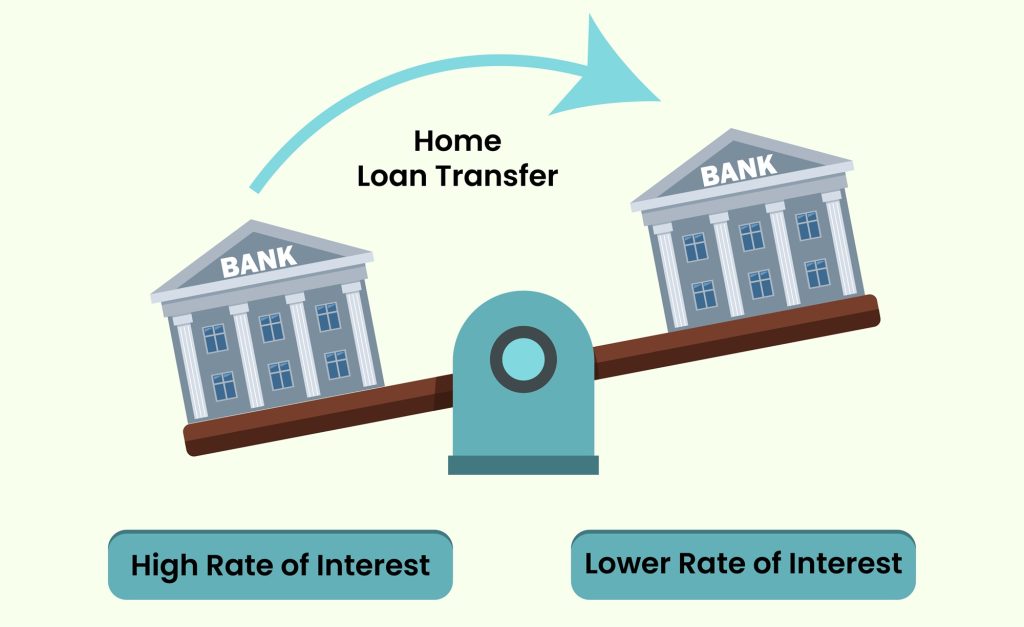A home loan balance transfer can be a strategic financial decision for homeowners looking to reduce their financial burden or enhance their loan terms. This process involves transferring an existing home loan from one lender to another, typically to take advantage of better interest rates, lower monthly payments, or improved loan features. However, before embarking on this journey, it’s crucial to understand several key factors that can influence your decision. In this article, we’ll explore the top factors you must be aware of regarding home loan balance transfers.

1. Interest Rates and Savings Potential
One of the primary reasons homeowners opt for a balance transfer is to secure a lower interest rate. A reduction in the interest rate can lead to significant savings over the life of the loan.
How to Evaluate Interest Rates
- Market Comparison: Research the current market rates offered by various lenders. Compare these rates with your existing loan rate to determine potential savings.
- Fixed vs. Variable Rates: Understand whether the new rate is fixed or variable. Fixed rates provide stability, while variable rates may offer lower initial rates but can fluctuate over time.
Calculate Savings
Utilize online calculators to estimate potential savings from a lower interest rate. This will help you make an informed decision based on projected financial benefits.
2. Loan Tenure and Monthly Payments
The tenure of your loan plays a crucial role in determining your monthly payments and the overall cost of the loan. When considering a balance transfer, evaluate how changing the loan tenure can impact your finances.
Shorter Tenure
- Higher Monthly Payments: A shorter tenure will increase your monthly payments but can lead to substantial interest savings over the loan’s life.
- Faster Equity Build-Up: You will build equity in your home faster, which can be beneficial for future financial needs.
Longer Tenure
- Lower Monthly Payments: Opting for a longer tenure reduces monthly payments, making it easier to manage cash flow. However, this may increase the total interest paid over time.
- Consider Your Financial Situation: Assess your current financial situation and long-term goals to determine the ideal tenure for your balance transfer.
3. Processing Fees and Other Charges
While a balance transfer can provide significant savings, it’s essential to factor in the associated costs. Lenders often charge processing fees, which can affect your overall savings.
Common Fees to Expect
- Processing Fees: These are one-time fees charged by the new lender for processing your balance transfer application.
- Prepayment Penalties: Check with your current lender about any penalties for paying off your loan early. This can impact your savings if the penalty is substantial.
- Legal and Documentation Fees: Ensure you account for any additional legal fees, valuation costs, and documentation charges that may arise during the transfer process.
Cost-Benefit Analysis
Conduct a cost-benefit analysis to determine if the potential savings from a lower interest rate outweigh the costs involved in the transfer. This will help you make a more informed decision.
4. Credit Score Impact
Your credit score plays a significant role in securing favorable terms for your home loan balance transfer. Lenders assess your creditworthiness to determine the interest rate and loan terms.
Understanding Credit Scores
- Importance of a Good Credit Score: A higher credit score can qualify you for lower interest rates, while a lower score may limit your options and lead to higher rates.
- Monitoring Your Score: Check your credit report for any discrepancies or issues that could negatively impact your score before applying for a balance transfer.
Improving Your Score
If your credit score is not optimal, consider taking steps to improve it before initiating a balance transfer. Paying down existing debts and ensuring timely bill payments can enhance your creditworthiness.
5. Loan Features and Flexibility
Different lenders offer varying features and benefits with their loan products. When considering a balance transfer, evaluate the additional features that can enhance your overall borrowing experience.
Key Features to Consider
- Flexibility in Repayments: Look for lenders that offer flexibility in repayment options, such as partial prepayments without penalties or the ability to change the loan tenure.
- Portability: If you plan to move in the future, check if the new loan is portable, allowing you to transfer the loan to a new property without incurring additional costs.
- Customer Service and Support: Research the lender’s reputation for customer service, as a responsive and supportive lender can make the borrowing experience much smoother.
6. Timing the Transfer
Timing can significantly affect the success of your home loan balance transfer. Several factors can influence when to initiate the process.
Market Conditions
- Interest Rate Trends: Monitor market trends for interest rates. If rates are expected to rise, it might be a good time to transfer your loan to lock in a lower rate.
- Personal Financial Situation: Evaluate your financial health and stability. If you anticipate changes in your income or expenses, consider how these factors might affect your ability to manage a new loan.
Seasonal Factors
Some lenders may offer promotions or incentives during certain times of the year. Keep an eye out for any offers that could provide additional savings or benefits during your transfer.
7. Lender Reputation and Reviews
Finally, it’s essential to choose a reputable lender for your home loan balance transfer. The lender’s reputation can significantly impact your experience and satisfaction with the loan.
Researching Lenders
- Read Reviews: Look for online reviews and testimonials from previous borrowers. This can provide insights into the lender’s customer service, responsiveness, and overall satisfaction.
- Check Ratings: Use resources like the Better Business Bureau (BBB) or Consumer Financial Protection Bureau (CFPB) to assess the lender’s standing and any complaints filed against them.
Recommendations
Seek recommendations from friends, family, or financial advisors who have experience with specific lenders. Personal referrals can often lead to finding trustworthy lenders.
Conclusion
A home loan balance transfer can be a strategic move for new and existing homeowners alike. By understanding the key factors—such as interest rates, loan tenure, processing fees, credit score impact, loan features, timing, and lender reputation—you can make an informed decision that aligns with your financial goals.
Before proceeding with a balance transfer, take the time to research and analyze your options thoroughly. With careful planning and consideration, you can leverage a home loan balance transfer to enhance your financial situation and achieve long-term savings.








